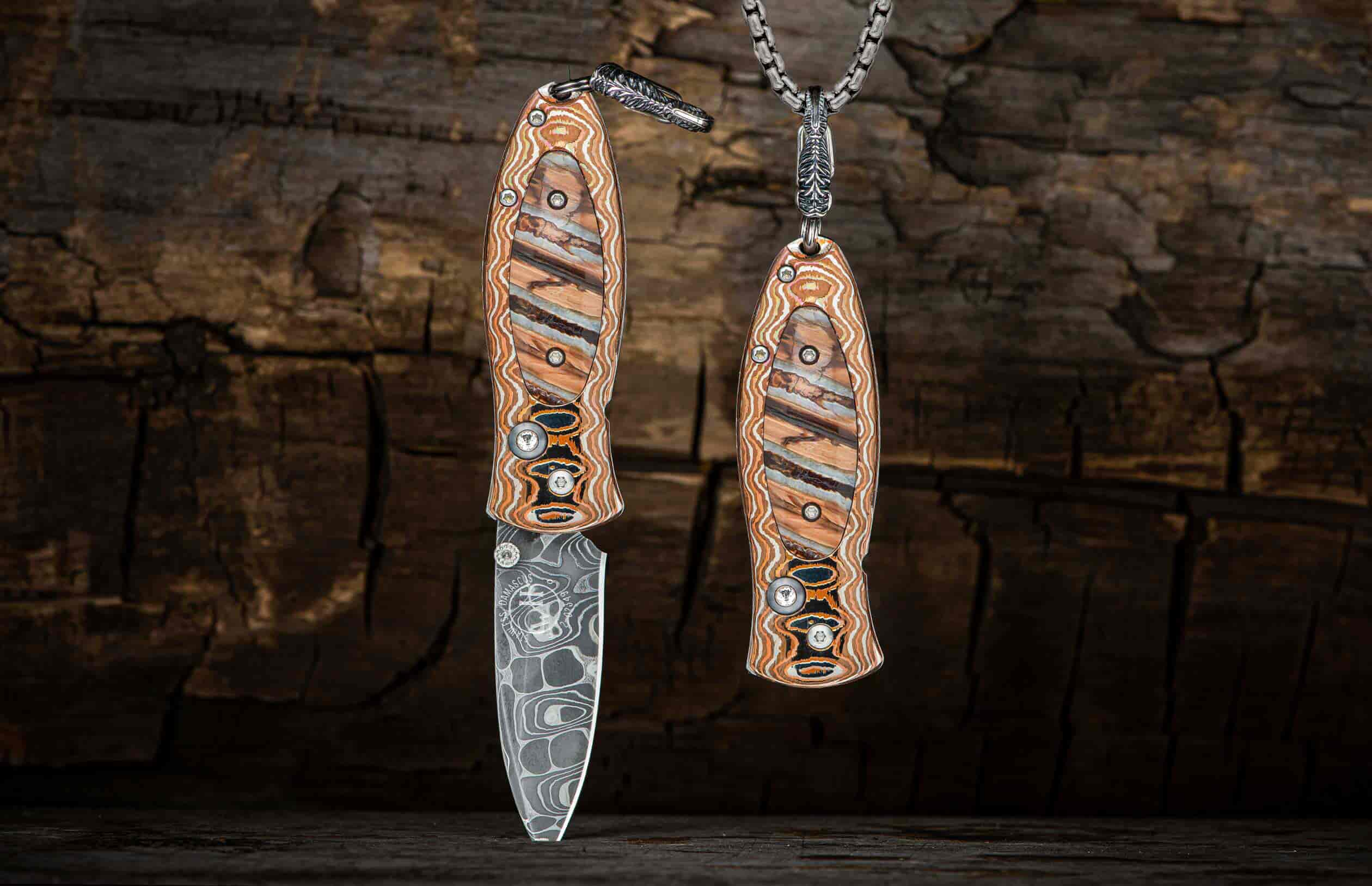Product Details
The 'Legacy' is a bold pendant, inlaid with 10,000 year old fossil mammoth tooth, framed in heat-colored 'Wave' mokume, and featuring a state-of-the-art blade made from 'Intrepid' damascus steel, hand-forged by Chad Nichols. A white topaz conceals William Henry’s button lock, ensuring that the blade is securely locked both open and closed, for safe wear and carry. The 'Legacy' comes on a 22 inch sterling silver box chain. A quick release clasp, also from sterling, allows you to take the knife off the cord for use, or to attach the knife to a keychain. (Optional 18, 20, or 24 inch chain by request)
Product SKU: B02 LEGACY
Features & Specs
- Safe button lock system
- Includes sterling silver clasp and tactical cord necklace
- Dimensions:
Blade 1.60" (40.64mm)
Handle 2.25" (56.0mm)
Overall open 3.80" (96.52mm)




